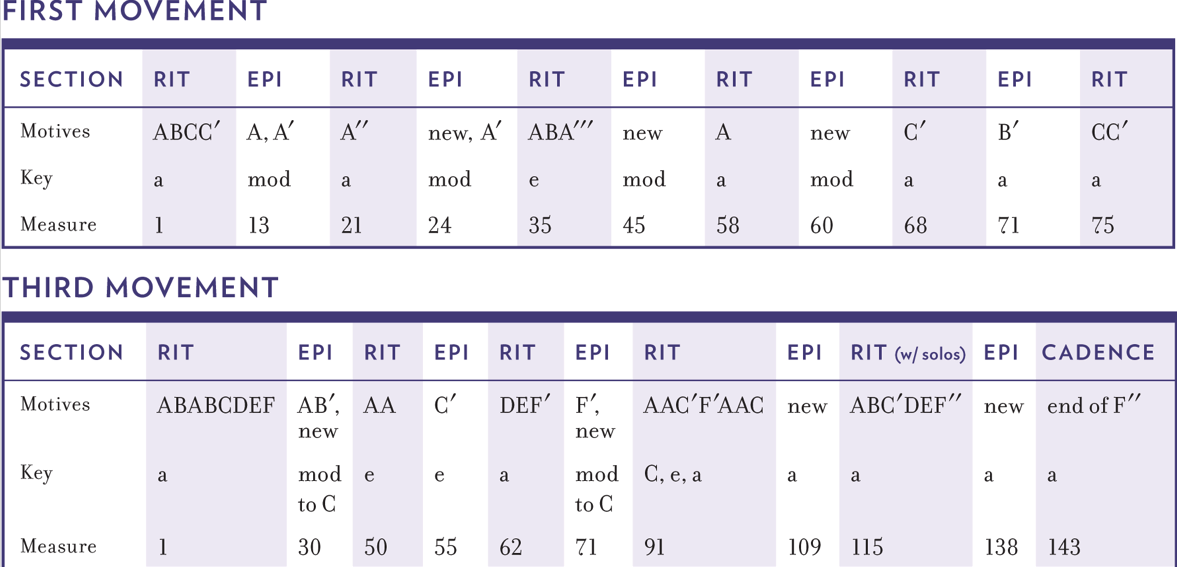"Soon after 1700 ritornello technique was transferred to the concerto. From the start, homophonic fast movements in concertos employed motto-themes to introduce successive periods. A logical extension of this practice was to model the structure on the church aria, using episodes for the soloist as the equivalent of vocal periods. The number of episodes, and thus of foreign keys visited, could be increased at will, making this ‘ritornello form’ almost indefinitely expandable. Although examples of primitive ritornello form exist in concertos by Giuseppe Torelli (op.6, 1698; op.8, 1709) and Henricus Albicastro (op.7, c1705), the fully developed structure is encountered first in Antonio Vivaldi's concertos written towards the end of the same decade, and most notably in those published in his op.3 (1711)."
(Oxford Music Online)
Ritornello form is elaborately discussed in A History of Western Music, chapter 22.




